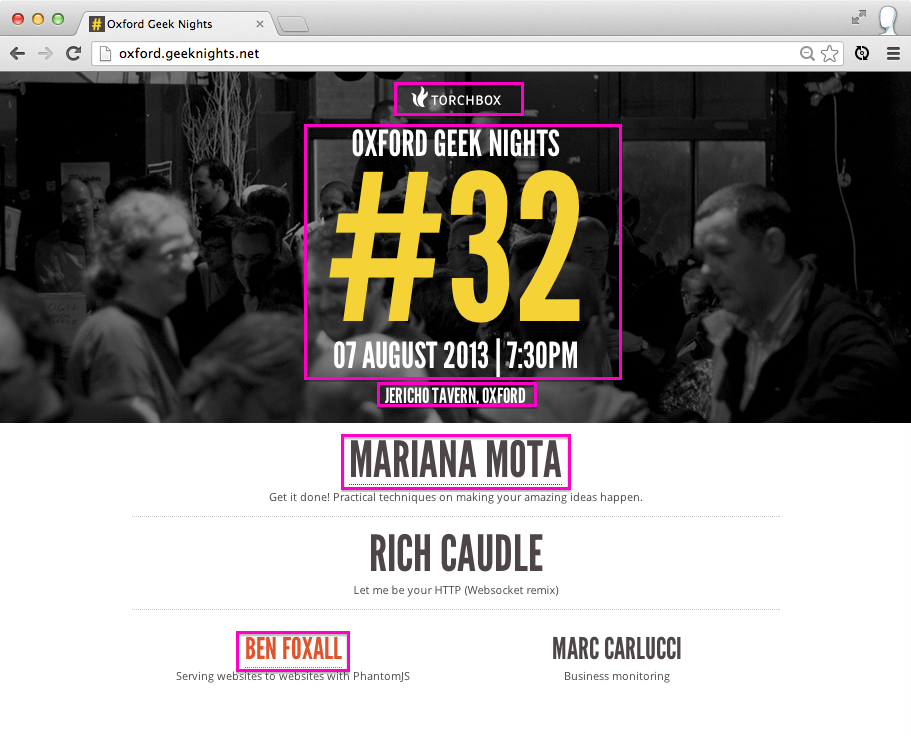This is an example of displaying content pulled from a PhantomJS webservice
I used this example when I talked about "serving websites to websites with PhantomJS" at this months Oxford Geek Nights
Link Areas
With phantomjs you are able to access more than just the HTML/DOM of a page - how the page is eventually rendered in a browser. In this example - we can pull out all the links of a page and find out what area (in pixels) they consume.

Using this script we can get a map of the links to the element areas, which looks something like this:
{
"http://benjaminbenben.com/":6534,
"http://bit.ly/Pesy75":10640,
"http://lanyrd.com/cqfdw":18012,
"http://mynameismartin.com/":8646,
"http://oxford.geeknights.net/":84000,
"http://oxford.geeknights.net/ogn29":52052,
"http://oxford.geeknights.net/ogn30":52052,
"http://oxford.geeknights.net/ogn31":52052,
"http://oxford.geeknights.net/volunteer.html":29520,
"http://torchbox.com/":4760,
"http://twitter.com/oxfordgeeks":20112,
"http://www.marianamota.com/":33128,
"http://www.torchbox.com/":3360,
"https://github.com/LuRsT":8580
}Graphing the data
We can now pull in this data with AJAX and render it on the page using d3 (the force directed graph layout)
initially populated with this blog post, double click to check one of the urls.